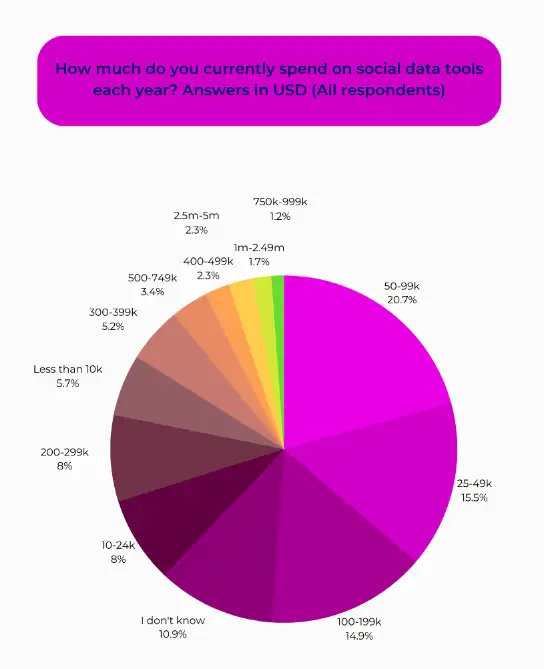Key Takeaways
- Social listening enables an organization to monitor online conversations and obtain insights into customer preferences and problems.
- Application Programming Interfaces (APIs) have a significant role in social listening as they allow the extraction of data from social media platforms.
- A few factors to take into account include data sources, data quality, data volume, and integration ease.
- It is vital for comprehending customer sentiment, identifying trends, and gaining a competitive edge in the market.
In the past when there was no social media, businesses used to rely on word-of-mouth to generate more revenue. They would hope that people would refer their products and services to friends and family members. Then came along TV and billboards and businesses did not have to rely a lot on their existing customers to get new customers; they could acquire new customers through advertising.
However, then came the era of digital media, which gave rise to digital gossip. It allowed people to share opinions at scale and unprecedented speed. Today, the internet has the power to make any brand and anyone famous.
So, businesses must know what people are thinking about their brands, and what are their opinions. This need for information has given rise to social listening that allows businesses to track their brands’ reputations across a digital platform.
However, it is vast and expansive. It is no easy feat to keep track of everyone without getting help from technology. One technology that has made this easier is APIs which allow businesses to get information at speed.
In this blog, we will discuss what social listening is and how Application Programming Interfaces can help.
To understand it, let’s imagine you’re the owner of a brand, let’s call it “TechGear Innovations,” which specializes in high-tech gadgets. Social listening is like having your virtual ear on the ground of the internet.
It’s a way for you to tune into conversations, opinions, and discussions that people are having online about your brand, products, and even topics related to your industry.
Just as you’d listen to your customers in a physical store to understand their preferences and concerns, it lets you “listen” to what people are saying on social media platforms, review websites, blogs, and forums.
You can find out what customers like about your gadgets, what they’re not so happy about, and even what features they might be wishing for, by keeping an eye on these online conversations. But it’s not just about eavesdropping – it lets you engage, too.
When someone says something positive about your latest gadget, you can show appreciation. If they’re not happy with something, you can step in to address their concerns and offer solutions.
The best part is that you can also “listen” to what people are saying about your competitors and get valuable insights into what they’re doing well and where they might fall short, helping you identify opportunities to stand out.
Do You Know?
According to a survey, 63% of social media marketers think that social listening will play a chief role in the coming years.
This stands for Application Programming Interface. Think of it as a bridge that allows different software applications to talk to each other and share information. It defines how various components of software should interact, making it easier for developers to connect their applications with external services or data sources.
It has a huge role to play in marketing today as it simplifies and enhances your marketing efforts by enabling different software tools to work together seamlessly. They empower you to create more targeted campaigns, automate tasks, and gain deeper insights into your audience, ultimately leading to more effective and efficient marketing strategies.
They allow you to pull information from different sources into a single dashboard. For instance, you can integrate your website with digital platforms like Facebook, Twitter, and Instagram using their respective APIs. Application Programming Interfaces from social media platforms allow you to schedule posts, track engagement, and analyze performance through third-party tools.
You can also use it to integrate tools like Google Analytics or HubSpot into your website to track user behavior, website traffic, and conversions.
So, how do restful APIs help in social listening?
Do You Know?
56% of the developers believe that API significantly contributes to the enhancement of their products.
APIs provide a structured way for applications, like digital media monitoring tools, to retrieve information from platforms like Facebook, Twitter, and Instagram. They offer specific endpoints that allow you to request information like posts, comments, likes, and user profiles.
They are the best way to practice social listening as these generate massive amounts of facts and APIs are designed to handle this volume efficiently. Another interesting thing about leveraging it is that it allows you to apply filters to the figures you’re retrieving.
You can specify parameters like timeframes, keywords, and user attributes, helping you focus on the most relevant information.
With it, you can also automate actions based on the information you collect, such as triggering alerts, generating reports, or responding to specific mentions. It ensures that you receive figures consistently formatted and structured, making it easier to analyze and compare over time.
With APIs handling data collection, you can focus more on the important task of analyzing and deriving insights from the gathered information, rather than spending time on manual facts gathering.

Choosing the right one requires careful consideration of several factors to ensure effective and efficient figures gathering and analysis. Here are some key factors to keep in mind:

Today, social media listening has become more important than ever. It is important to know what customers think about a product, so businesses can take corrective actions immediately. Online media listening also gives a lot of opportunities.
Spotting the trends will help businesses to roll out new products and services before their competitors do. You could say that social listening is the key to gaining a competitive edge in this market.
